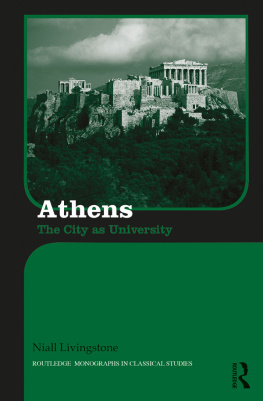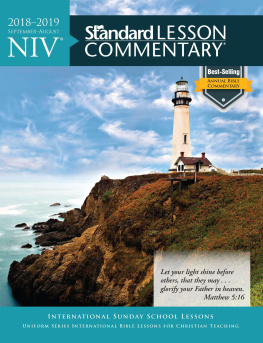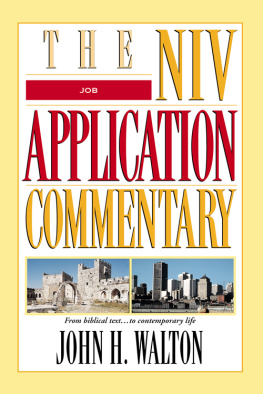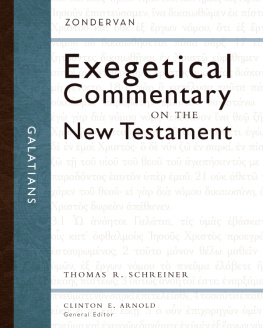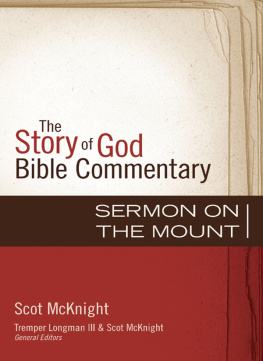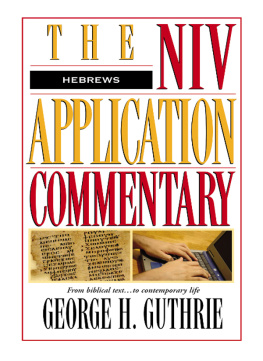Visit Tyndale online at www.newlivingtranslation.com and www.tyndale.com.
Life Application Bible Commentary: Galatians
Copyright 1993 by The Livingstone Corporation. All rights reserved.
Contributing Editors: James C. Galvin, Ed.D., and Ronald A. Beers
Cover photograph of bridge and path copyright by Alyn Stafford / iStockphoto. All rights reserved.
Cover photographs of woman with a laptop and man holding a pen copyright by Dan Wilton / iStockphoto. All rights reserved.
Cover photo of man reading copyright by Ronnie Comeau / iStockphoto. All rights reserved.
Interior illustration of butterfly copyright 2004 by Tracy Walker. All rights reserved.
Scripture quotations marked NIV are taken from the Holy Bible, New International Version, NIV. Copyright 1973, 1978, 1984 by Biblica, Inc. Used by permission. All rights reserved worldwide.
Scripture quotations marked NKJV are taken from the New King James Version. Copyright 1982 by Thomas Nelson, Inc. Used by permission. All rights reserved. NKJV is a trademark of Thomas Nelson, Inc.
Scripture quotations marked NRSV are taken from the New Revised Standard Version of the Bible, copyright 1989, Division of Christian Education of the National Council of the Churches of Christ in the United States of America. Used by permission. All rights reserved.
(No citation is given for Scripture text that is exactly the same wording in all three versionsNIV, NKJV, and NRSV.)
Scripture quotations marked KJV are taken from the Holy Bible, King James Version.
Scripture quotations marked NLT are taken from the Holy Bible, New Living Translation, copyright 1996 by Tyndale House Foundation. Used by permission of Tyndale House Publishers, Inc., Carol Stream, Illinois 60188. All rights reserved.
TYNDALE, Life Application, New Living Translation, NLT,Life App, the Life App logo, and Tyndales quill logo are registered trademarks of Tyndale House Publishers, Inc.
Library of Congress Cataloging-in-Publication Data
Galatians / Bruce B. Barton... [et al.].
p. cm. (Life application Bible commentary)
Includes bibliographical references and index.
ISBN 978-0-8423-3026-8
1. Bible. N.T. GalatiansCommentaries. I. Barton, Bruce B.
II. Series.
BS2685.3.G35 1994
227.407dc2094-2246
Build: 2020-10-08 10:06:51 EPUB 3.0
FOREWORD
The Life Application Bible Commentary series provides verse-by-verse explanation, background, and application for every verse in the New Testament. In addition, it gives personal help, teaching notes, and sermon ideas that will address needs, answer questions, and provide insight for applying Gods Word to life today. The content is highlighted so that particular verses and phrases are easy to find.
Each volume contains three sections: introduction, commentary, and reference. The introduction includes an overview of the book, the books historical context, a timeline, cultural background information, major themes, an overview map, and an explanation about the author and audience.
The commentary section includes running commentary on the Bible text with reference to several modern versions, especially the New International Version and the New Revised Standard Version, accompanied by life applications interspersed throughout. Additional elements include charts, diagrams, maps, and illustrations. There are also insightful quotes from church leaders and theologians such as John Calvin, Martin Luther, John Wesley, A. W. Tozer, and C. S. Lewis. These features are designed to help you quickly grasp the biblical information and be prepared to communicate it to others.
The reference section includes a bibliography of other resources and an index.
INTRODUCTION
Slavery comes in many forms. Historically, slaves were men and women forced to serve their conquerors or captors. But there are other ways to become enslaved. Some men and women, trapped by destructive habits, struggle under the control of drugs or alcohol. Others, trapped in destructive relationships, struggle to live with an abusive spouse or parent. Still others, trapped in dead-end jobs or systems, struggle to extricate themselves from financial and emotional strangleholds. And all who do not live in Christ are slaves to sin.
Yet all slaves share a common dreamto be free!
As a highly educated world traveler, Paul had seen and known many slavesmen and women subjugated by powerful governments, powerful leaders, and powerful personalities. In fact, Paul himself had been a slave to religious zealotry and legalism. But Paul also knew what it meant to be free, to know true liberty in Christ. And since meeting his Liberator on the road to Damascus, Paul had spent his life spreading the news of that freedom.
Having seen both sides, nothing bothered Paul more than seeing people return to bondage. Thats what he learned about his friends in Galatia: Men and women who had found freedom in Christ were being pressured and persuaded to return to the slavery of religious rules and regulations. Pauls response was quick and strongdont desert Christ (1:6), dont be foolish (3:1), dont be cursed (3:10), dont be a prisoner (3:23), and dont be a slave (4:8); instead, be free (4:7), be free (4:31), be free (5:1), BE FREE (5:13)!
Pauls letter to the Galatians is called the charter of Christian freedom. In it Paul proclaims the reality of believers liberty in Christfreedom from the law and the power of sin, and freedom to serve the living Lord.
Are you trapped in sin? You can be a child of God through faith in Christ Jesus, an heir to the promise, and free (3:26-29). Are you trapped in legalism, trying to earn favor with God by doing good and being good? Dont be burdened again by a yoke of slaverystand firm and free in Christ (5:1). Are you unsure how to channel the energy from your newfound liberty? Use your freedom to serve others with love (5:13).
AUTHOR
Paul (Saul of Tarsus): Pharisee, apostle, teacher, church planter, evangelist.
The very first line of this letter names Paul as the author (1:1). He is also mentioned in 5:2, Mark my words! I, Paul, tell you that if you let yourselves be circumcised, Christ will be of no value to you at all ( NIV ). In addition to this internal evidence, Pauls authorship of Galatians is affirmed by many early church fathers, including Clement of Rome, Irenaeus, and Tertullian. Pauls authorship of Galatians has been widely accepted by virtually all biblical scholars, including Bible critics, from the heretic Marcion (mid-second century) to those of the Tbingen school of higher criticism in the last century. And Galatians traditionally has been recognized as the standard for measuring other documents claims to Pauline authorship.
To fully understand this profound letter, we need to understand Paul, because it flows out of his past personal experience with Judaism and his newfound relationship with his risen Lord.
Paul was a Jew, culturally and religiously, by birth and by choice. Little is known of Pauls birth and childhood except that he was from Tarsus in Cilicia, far north and west of Jerusalem. Trained by Gamaliel, the most respected rabbi of the day (Acts 22:3), Paul became a Pharisee (Philippians 3:5). As with most serious Pharisees, Paul focused his attention and energy on keeping the law and guarding the purity of the faith. Wanting more than anything to please God and believing that the Jews alone were Gods chosen people, Paul threw himself into the practice of his religion.


